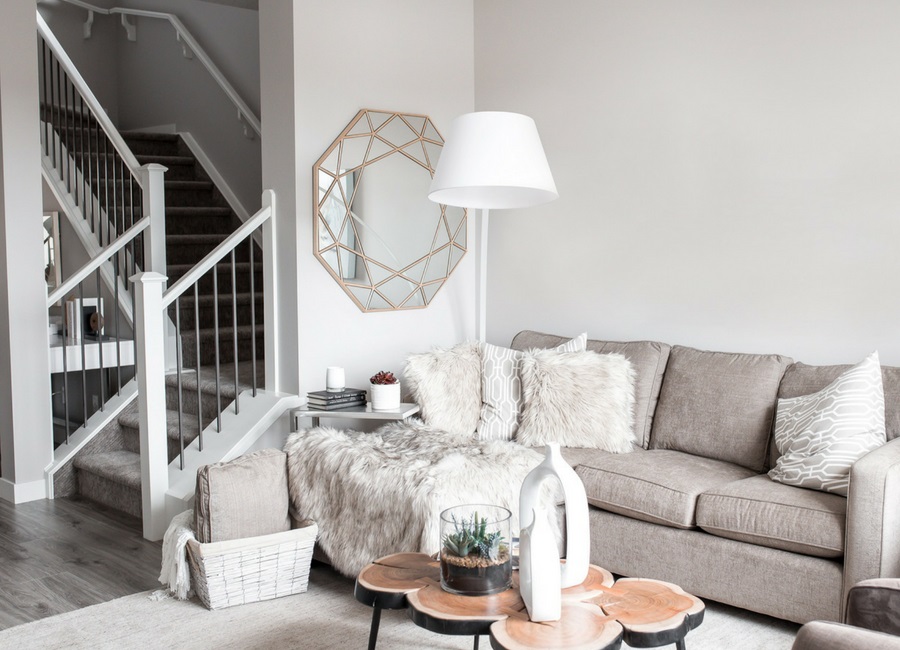We all have dreams of home ownership. It is a part of the American Dream, after all! While purchasing a home can be a major financial decision, it’s important to make sure it’s done right. There are certain signs you can’t afford a new home, and being able to recognize them is key to staying financially secure.
Making sure you check off all of the items on the Home Buyer’s Checklist is a good indicator that you’re on the right path. When you do make the decision to buy your home, you don’t want to put yourself in a bad financial situation. Check out 6 signs you can’t afford a new home. If you have any of these signs, try to turn them around before moving forward with your purchase.
#1 The mortgage payment makes your budget very tight
The golden rule of homeownership is that your monthly housing costs does not exceed 30% of your income. I suggest taking it a step further and ensuring your mortgage and debts don’t exceed 30% of your income.
Now, if you have student loans, that may not be entirely possible, but it’s certainly something to think about. Something else to think about is if your debt-to-income ratio (meaning all debts, including mortgage) totals 43%, you may not even be approved for a home loan.
If your mortgage is approaching 50% of your monthly income, that means that half of your income goes straight to your home. The other half is split between everything else you need to take care of – bills, expenses, debts, and savings. That doesn’t leave much room in your budget for things to get taken care of without being too tight.
Take a very hard look at your budget before purchasing a home. What are the numbers showing you? Is your budget already tight before a mortgage? That may be a sign you need to hold off on purchasing a home until you increase your income or decrease your debts.
#2 The best interest rate you are offered is well above the lowest rate
The federal interest rate changes every day. There is a baseline established as the best rate for home-buying, based on that federal rate. You should know what standard interest rates are at the time you are shopping for a home.
If you go into the application process knowing what the best interest rate is at the time, whatever you are qualified for will show if you are ready for a home. Since your interest rate is determined one your credibility to pay the loan back, a higher interest rate means you aren’t as credible as the lender would like. The closer you are to the best interest rate, the better you are to move forward with a purchase.
When you learn the interest rate you are approved for, and it’s higher than expected, try to figure out why. Do you have too many debts? Is your credit score too low? Whatever the reason is, try to fix your credit credibility before moving forward with buying a home.
#3 You can’t put 20% down up front
Notice how I ended the sentence with “up front”? Just because you can put 20% down doesn’t mean you necessarily should or have to. However, you should at least have the option to put 20% down on your new home if you wanted to. Putting 20% down will save you from paying monthly PMI. PMI is private mortgage insurance that is required by anyone who does not put at least 20% down when purchasing a home.
PMI is simply insurance for the lender, in case you slip and fall on your mortgage payments. PMI is calculated based on your mortgage terms and how much you can put down up front.
You never get that money back. You will continue to pay PMI until your loan to home value is less than or equal to 80%. If your home value goes down, you’ll be paying PMI longer.
If you don’t have 20% saved just for a down payment, think about why. Could you be rushing the home buying process? How much do you have saved for a down payment? Focus on saving as much as possible before taking the home ownership leap!
#4 You don’t have an emergency savings
A mortgage is a much bigger responsibility than paying rent. Sure, you have to make a payment every month on both, but not paying rent is not the same as not paying a mortgage. Not paying rent means you get evicted and move on. Not paying a mortgage means your house could be foreclosed on and every dollar you did put in is lost.
Since no one can predict the future, the best way to prepare for the unplanned is to plan for it! The best way to do that? Have an emergency fund. Ideally, you would want 3-6 months’ worth of living expenses, including your mortgage payment. At least you can take comfort knowing that you have a couple months’ worth of expenses while you recover from the emergency.
#5 Your home purchase price the maximum loan amount you were approved for
Just because the bank tells you that you are approved for up to $250,000 for a home does not mean you should be looking for a $250,000 home. The closer you get to the loan amount you were approved for, the tighter your budget will be. Obviously, right? The more you take from the loan, the higher your payments will be.
When you are shopping for a home, it’s important to find what you like, but also what you can afford. There is nothing fun about being “house poor”. Meaning, you can’t do anything but pay your mortgage. That will only lead to resentment and unhappiness. Make sure you keep your budget front and center when deciding what you can afford.
#6 Your loan terms aren’t common
The most common home loan terms are 15 and 30-year fixed rate loans. This means that whatever your interest rate is, it’s fixed for a 15 or 30-year term. Depending on your credit and income, you may not qualify for a fixed-rate mortgage. When this happens, banks will often offer different kinds of loans. These can include adjustable rate mortgages (ARM loans), in which interest rates may start low but increase at a later date.
While an ARM loan may sound lucrative up front, you will be in for a rude awakening when the interest increases. Your monthly payment will increase as well. If you don’t have the extra income in your budget to cover it, you could default on your loan. Too many months of not paying your home loan can lead to foreclosure.
Related: 5 Tips for First Time Home Buyers
Purchasing a home should not be a quick decision. A lot of thought, time and energy should be leveraged to ensure you are making the right choice. If all signs you can’t afford a new home are showing, think about putting yourself in a better position before anything else.
Have you purchased a home before? Have you gone through the application process? Share your tips and experiences with me and other CGS readers by leaving a comment below!






1 thought on “6 Signs You Can’t Afford a New Home”
It can be hard to take a look in the mirror, especially when you want something so bad. Being logical about a major purchase, like a home, will make your life so much easier down the line!